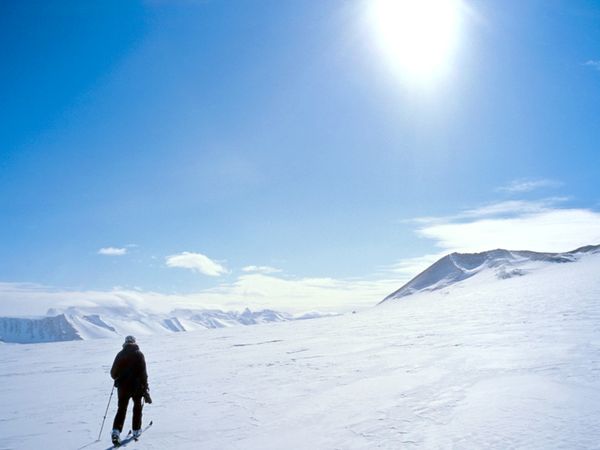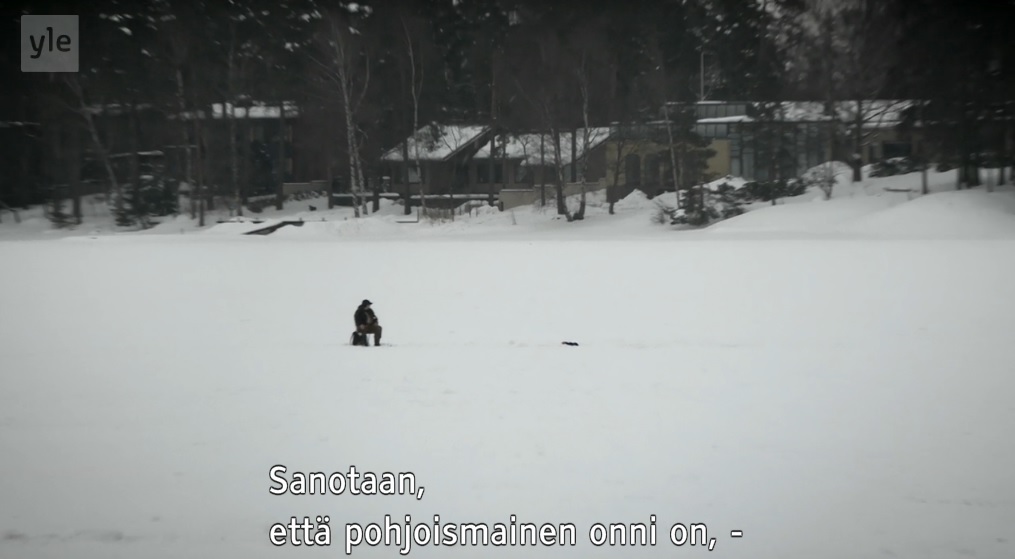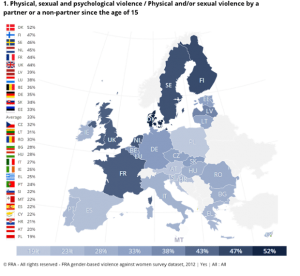“Happiness for the Nordics is when nobody knocks on your door and demand something from you. Here it is a democratic human right to be let undisturbed.”
The Norden TV documentary (YLE 2014)
The last few months Finnish media has given special attention to the issue of loneliness in Finnish society. The book Yksinäisten Suomi [Finland of the lonely], edited by Juho Saari, professor in social and health policy at the University of Tampere, brings up the fact that Finland, like the other Nordic countries, is becoming a society of one-person households. He even goes on claiming that much of the national health diseases that have been combatted by the Nordic Welfare State regime in Finland for decades, like alcoholism and cardiovascular disease, is to be seen as results of a fundamental structural problem: loneliness in Finnish society.
Saari talks about a “root cause” (juurisyy), which quite resembles a cultural study approach seeking to define and analyze deep structural fundaments of different societies. Instead of a positivist hands on approach collecting statistics and then moving on to curing measures by social policy legislation, loneliness as an analytic concept is an interesting take on the matter. It is also a challenging and ambiguous theme, when trying to open up one fundamental issue in Nordic societies. And this is a larger Nordic issue, not just a Finnish phenomenon.
To start with, loneliness is not seen only in a negative light by the Nordics. Actually, there are many positive connotations associated with loneliness. There is the heroic loneliness cherished in many ways in the past. To be able to do great deeds alone, not seldom with nature as the opponent to beat, is a classic branch on Nordic heroism. Nansen, Amundsen, Nordenskiöld, André and other champions of polar exploration took on this challenge to prove their capability to conquer the most distant Arctic spaces. They were not completely alone, but still Arctic exploration in many ways highlight man’s solitude stand against the extreme powers of nature. And the legacy lives on. On the back cover of a book in my office shelf, I read:
He was the first person to plod solo and unassisted to both the North and South Poles; the first to ski alone and unassisted across Antarctica; the first to ski—and swim—alone across the Arctic Ocean.
No, it is not a Monthy Pythonesque satire, nor a novel by Erlend Loe, but the book In the Footsteps of Nansen (2009), depicting the deeds of contemporary Norwegian polar explorer Børge Ousland. In an interview in National Geographic, he shares his feelings about Arctic loneliness: “To be in the middle of the strong Arctic or Antarctic nature with just your sled and skies, to be self-supplied for up to three months at the time, is a lifelong and intense experience.”

Børge Ousland alone in the Arctic (but, who took the photo?). Illustration from National Geographic.
The cult of loneliness
To stand strong in solitude is not only an Arctic sport in Norwegian history, but also an intellectual. In many of Henrik Ibsen’s plays the hero is a person who takes on the rotten conventions of the bourgeoisie society alone. Standing alone is a sign of bravery, independence and intellectual nobility. On the contrary, not being able to stand alone is a sign of weakness. In An Enemy of the People (En folkefiende, 1882) Ibsen makes this crystal clear. In the fifth and last act, doctor Thomas Stockmann utters: “You see, the point is that the strongest man in the world is he who stands most alone.”
So, is this cult of loneliness a mark of nobility, or just an atavistic “root cause” for a people inhabiting a sparsely populated remote region with a feeble urban tradition? In a Finnish Gentleman’s handbook from 1947, Jokaisen miehen kirja, there is one section dedicated to outdoor activities. It suggests that going solo on a Sunday hike might actually be the best way of relieving work related stress since, “soon you have no worries and you are your own master like the eagle in the sky. Nature is your most loyal friend […] even the manliest of men is sometimes in need of support.” Some years later, in 1968, Paul Britten Austin, a British specialist on Swedish literature, came to the same conclusion. In the book On Being Swedish. Reflections towards a better understanding of the Swedish character, he observed that Swedes take more interest in nature than in other people.
Avoiding contact with other people seems to be a state of comfort for Homo Nordicus. Imagine that you are doing what you like the most, but all the sudden you are interrupted. Formula one driver Kimi Räikkönen’s reaction to his team technicians over the radio is a modern classic: “Leave me alone, I know what I’m doing!”

The Iceman, Kimi Räikkönen, immortalized in a manga style cartoon (art by ShinjiRHCP)
Judging from everything said above, one obviously thinks that this is an exclusively male issue. That women tend to be more social and to seek each others company and support. This might well be part of the truth, but I would not buy this explanation entirely. When one observes people having lunch alone in Helsinki lunch restaurants for example, there is no evident male dominance. And the proposed escape to loneliness from a too hectic civilization, also has its female examples. In the film Grand Hotel, Greta Garbo desperately repeats, “I just want to be alone”, predicting the final years of mystical solitude for the Swedish actress.
In the splendid TV series The Norden (2014), produced by Finnish YLE in Swedish language, the journalists Joakim Rundt and Lasse Grönroos take on the issue of Nordic loneliness, stating that: “Happiness for the Nordics is when nobody knocks on your door and demand something from you. Here it is a democratic human right to be let undisturbed.” In one of the episodes they have invited a young Italian male, Carlo from Sicily, to observe his contact with Nordic social life. He is sent out on the streets of Oslo, in order to ask people passing by what they know about their neighbours? The result is that no one seems to know anything about their neighbours, nor do they seem to care. There is only one exception, but it is soon revealed that he is British.

The Norden, episode 5 (The sequence between 16min 20secs – 19min 40secs)
The Welfare State and loneliness
This detachment from people in the close surrounding has awaken different theories. One of the most notable and provocative is that of Swedish historian and social scientist Lars Trägårdh, who introduced the notion of Statist individualism in the late 1990s. The point he makes is that the Nordic Welfare Model accentuates the straight contact between the state and the individual. In a quest for equal opportunities, tax financed universal benefits are targeted at the individual, sidestepping other societal arrangements, such as families, friends, neighbours, social networks, etc. Trägårdh’s critical stand suggests that the rooted longing for loneliness is re-formulated in the Nordic urban modernist project called the People’s Home – Folkhemmet, the Swedish national notion for the Nordic Welfare State. We do not need to know our neighbour, unless we voluntarily choose to do so. And seemingly Homo Nordicus often choses not to do so.
But, how far can and should we go in blaming the Welfare state for people being lonely? There are plenty of elements in Nordic societies suggesting an opposite development. Most children are socialized to group dynamics from a very young age. Already children in age of 1–3 years, are introduced to the comprehensive tax financed day care system. The Nordic countries have a splendid history of association life. Some years back people would still be members of at least one, often many, associations. Today this tradition is vanishing, but yet far from dead.
Another question we might pose is: where to draw the thin line between positive and cherished solitude and marginalized and sad loneliness? There are no easy and measurable answers, but it is interesting that the term “loneliness” now seems to enter policy-oriented social science. Juho Saari identifies discussion groups on internet as the new space for Finnish (and Nordic?) loneliness. Operating with qualitative cultural analysis tools is not always precise, but since science is about solving problems in the real world, we obviously need to look at the theme of Nordic loneliness from Ibsen to Räikkönen. The phenomenon clearly deserves more attention also from a humanities and cultural studies perspective.
* Over the years, I have had numerous inspiring dialogues with colleagues, who have greatly contributed to developing these ideas around Nordic loneliness. I am indebted to Henrik Stenius, Hadle Oftedahl Andersen, Mary Hilson, Anka Ryall, Johan Strang, Claus Elholm Andersen, and many, many others.
PETER STADIUS is professor in Nordic Studies and research director at CENS, University of Helsinki




